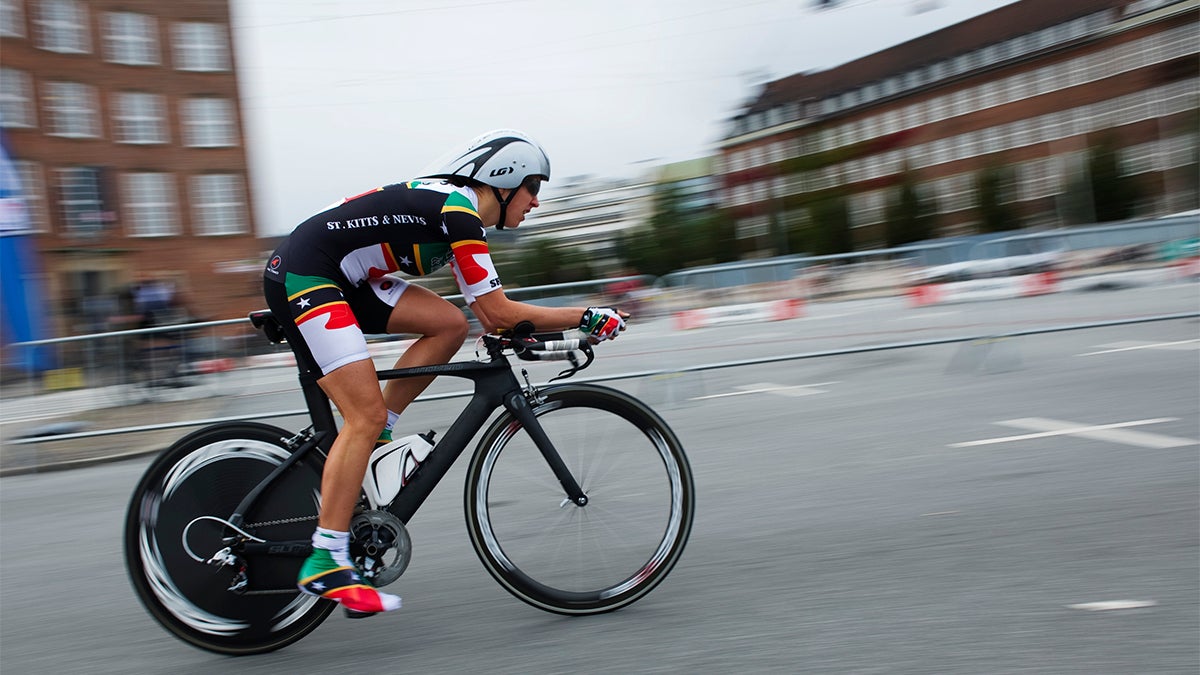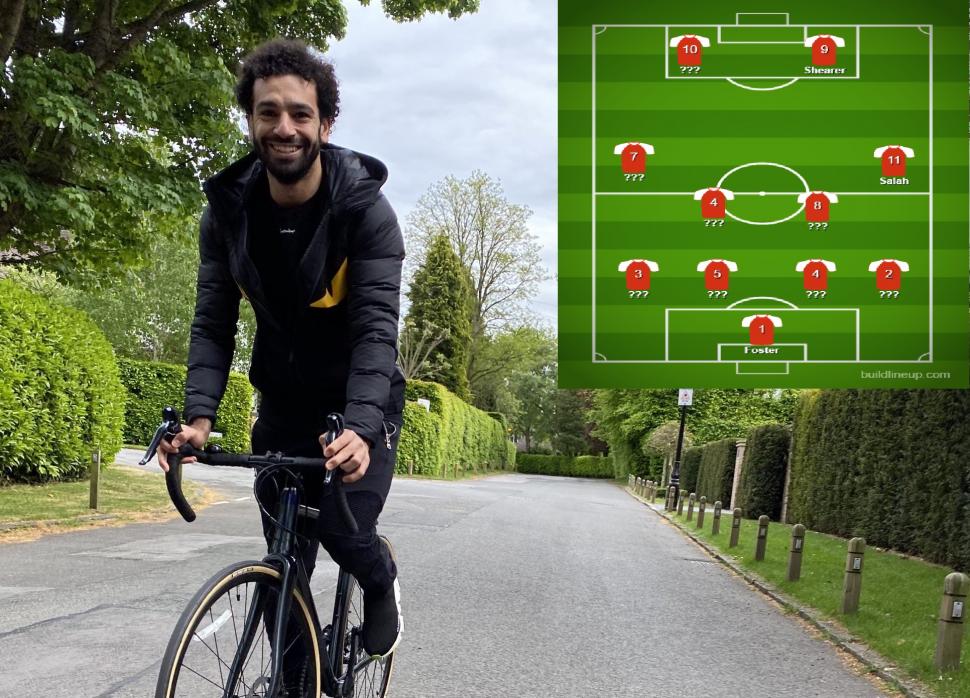Cycling is beneficial for footballers as it improves cardiovascular fitness and enhances leg strength. Footballers can benefit from incorporating cycling into their training routine as it helps to increase endurance and speed, leading to improved performance on the field.
Additionally, cycling is a low-impact exercise that reduces the risk of injuries often associated with high-intensity football training sessions. By regularly cycling, footballers can enhance their overall physical fitness, which is vital for the demanding nature of the sport. Whether it’s for warm-up, active recovery, or cross-training, incorporating cycling into a footballer’s fitness regimen can have numerous positive effects on their performance, making it a valuable exercise to consider.

Credit: globalsportmatters.com
The Benefits Of Cycling For Footballers
When it comes to staying fit and improving performance on the football field, many players turn to cycling as a valuable cross-training exercise. Cycling offers a wide range of benefits that can enhance a footballer’s game in various ways.
Improved Cardiovascular Endurance
Cycling is a fantastic way for footballers to improve their cardiovascular endurance. By engaging in regular cycling sessions, players can strengthen their heart and lungs, allowing them to deliver oxygen more efficiently to their working muscles. This enhanced endurance can be a game-changer on the field, enabling players to maintain a high level of performance throughout the entire match.
Enhanced Leg Strength
In addition to cardiovascular benefits, cycling is a fantastic way to enhance leg strength. Pedaling against resistance forces the muscles in the legs to work harder, leading to increased power and stability. This leg strength is crucial for footballers who need to sprint, change direction, and jump during games. By incorporating cycling into their training routine, footballers can develop stronger legs and improve their overall performance on the field.
Reduced Risk Of Injury
One of the key advantages of cycling for footballers is the reduced risk of injury. Football is a physically demanding sport that puts significant strain on the body, especially the joints. Engaging in low-impact activities like cycling can help alleviate the stress on the joints while still providing a challenging workout. By including cycling in their training program, footballers can keep their bodies strong and resilient, decreasing their chances of sustaining injuries on the field.
So, if you’re a footballer looking for a way to improve your game, consider hopping on a bike. Cycling offers numerous benefits, including improved cardiovascular endurance, enhanced leg strength, and reduced risk of injury. By incorporating regular cycling sessions into your training routine, you can take your performance on the football field to the next level.

Credit: m.youtube.com
How Cycling Complements Football Training
Cycling is a beneficial addition to football training as it provides cardiovascular exercise, improves leg strength and endurance, and helps prevent injuries. It is an effective way for footballers to enhance their fitness and performance on the field.
Aerobic Conditioning
Cycling is an excellent way for footballers to improve their aerobic conditioning. The cardiovascular demands of cycling help players develop their stamina and endurance, allowing them to last longer on the pitch and maintain a high work rate throughout the game. Regular cycling sessions can increase lung capacity and improve the efficiency of the heart, leading to better overall fitness levels. This increased aerobic capacity enables footballers to recover faster between high-intensity sprints and maintain a consistent performance throughout the match.
Cross-training Benefits
Cross-training is vital for footballers, as it helps to prevent overuse injuries, improve overall fitness, and enhance performance. Cycling is an ideal cross-training activity for footballers due to its low-impact nature, which reduces stress on the joints while still providing a challenging workout.
By adding cycling to their training routine, footballers can target different muscle groups and improve their overall strength, power, and flexibility. This helps to develop a more well-rounded athlete, reducing the risk of muscle imbalances and increasing the footballer’s ability to withstand the physical demands of the sport.
Active Recovery
Incorporating cycling into a footballer’s training program can also be beneficial for active recovery. After intense training or matches, cycling can help promote blood flow and aid in the removal of waste products like lactic acid, which can cause muscles to fatigue and feel sore. The low-impact nature of cycling allows footballers to engage in light exercise without putting excessive strain on their joints or muscles.
This active recovery technique can help accelerate the recovery process, reducing muscle soreness and increasing the footballer’s readiness for subsequent training sessions or matches. Overall, cycling provides footballers with numerous benefits that complement their training. From improving aerobic conditioning and enhancing cross-training benefits to aiding in active recovery, incorporating cycling into a footballer’s routine can be an effective way to improve their overall performance on the pitch. Note: Ensure the heading, content, and formatting are retained when integrating this response into a WordPress blog.
Cycling Tips For Footballers
For footballers looking to improve their performance and overall fitness, cycling can be a great addition to their training routine. Not only does it provide an excellent cardiovascular workout, but it also helps to build leg strength and endurance. In this article, we will discuss some important cycling tips for footballers to ensure they get the most out of their rides.
Choosing The Right Type Of Bike
When it comes to choosing a bike, footballers should opt for a road bike or a hybrid bike. These bikes are lightweight, efficient, and designed for smooth paved surfaces, making them perfect for training rides. They also offer a more aggressive riding position, which helps to engage and strengthen the core muscles.
Proper Bike Fit
Ensuring the right bike fit is essential to prevent injuries and optimize performance. Footballers should pay attention to the following aspects of bike fit:
- Saddle height: The saddle should be adjusted so that the legs are at a slight bend when the pedal is at the bottom position.
- Saddle position: The saddle should be positioned horizontally, providing a comfortable seating position.
- Handlebar height: The handlebars should be adjusted to a height that allows for a slight bend in the elbows, promoting an aerodynamic position.
- Reach: The distance between the saddle and handlebars should be adjusted to ensure a comfortable reach while maintaining good control of the bike.
- Cleat position: For footballers using clip-in pedals, the cleat position should be adjusted to provide optimal power transfer and prevent discomfort or injuries.
Integrating Cycling Into the Training Schedule
Footballers should integrate cycling into their training schedule strategically to reap the maximum benefits. Here are some tips:
- Warm-up and cool-down: Start each cycling session with a warm-up and end with a cool-down to prepare the body and prevent muscle soreness.
- Aerobic rides: Include longer, moderate-paced rides to improve cardiovascular fitness and endurance.
- Interval training: Incorporate high-intensity intervals into rides to boost speed and power.
- Hill training: Seek out hilly routes to build leg strength and improve climbing abilities.
- Active recovery: Use shorter, easy rides on rest days as active recovery to promote blood flow and aid in muscle repair.
By following these cycling tips, footballers can enhance their fitness levels, improve performance on the field, and reduce the risk of injury. Remember to always listen to your body, stay hydrated, and wear appropriate safety gear while cycling.

Credit: www.cyclist.co.uk
Frequently Asked Questions On Is Cycling Good For Footballers
Can Cycling Increase Stamina For Football?
Cycling can improve stamina for football by building cardiovascular endurance and leg strength. It increases lung capacity and oxygen efficiency, aiding in endurance during games. Additionally, cycling is a low-impact exercise that reduces the risk of injury. Overall, incorporating cycling into training can enhance a football player’s stamina and performance.
Does Riding A Bike Help With Football?
Riding a bike can help with football by improving cardiovascular fitness, leg strength, and endurance. It also enhances balance and coordination skills, which are crucial in football. By cycling, players can boost their overall fitness levels, leading to better performance on the field.
Does Cycling Improve Athletic Performance?
Yes, cycling improves athletic performance by strengthening muscles, increasing cardiovascular fitness, and improving endurance and stamina. Regular cycling helps to improve speed, agility, and overall physical performance, making it an effective activity for athletes of all levels.
Why Do Football Players Ride Bikes On The Sidelines?
Football players ride bikes on the sidelines to stay warm, keep their muscles loose, and quickly get to different areas of the field. It helps them maintain their physical readiness during breaks in the game.
Conclusion
Cycling can be a beneficial addition to a footballer’s training routine, as it helps improve cardiovascular endurance, reduces the risk of injury, and promotes recovery. By incorporating cycling into their fitness regimen, footballers can enhance their overall performance on the field.
So, hop on a bike and pedal your way to success as a footballer!



